Adding with Visual Aids Worksheets
Addition Sums with Pictures (A)
Year groups: 1

Addition Sums with Pictures (B)
Year groups: 1
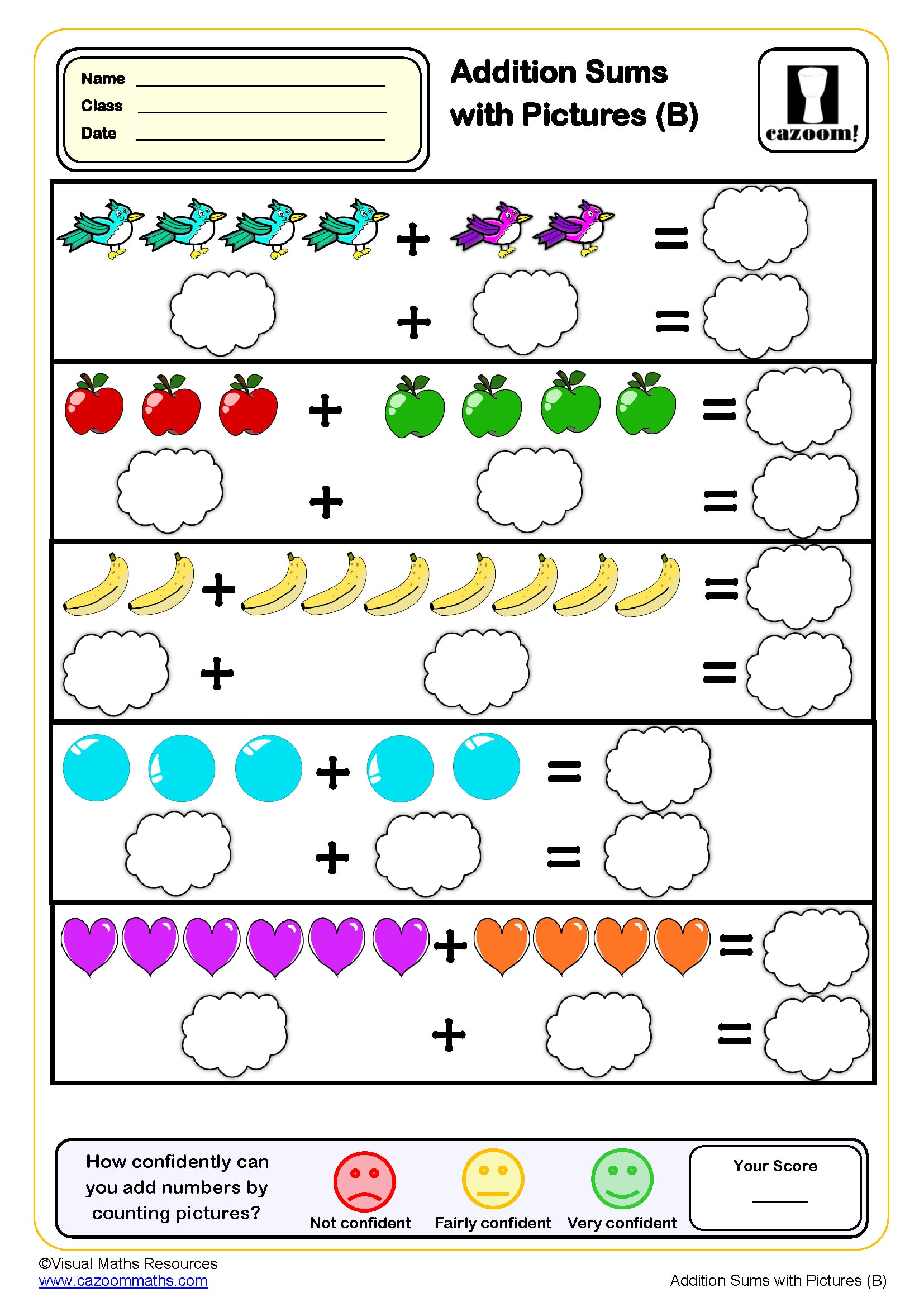
Addition with dots (A)
Year groups: 1
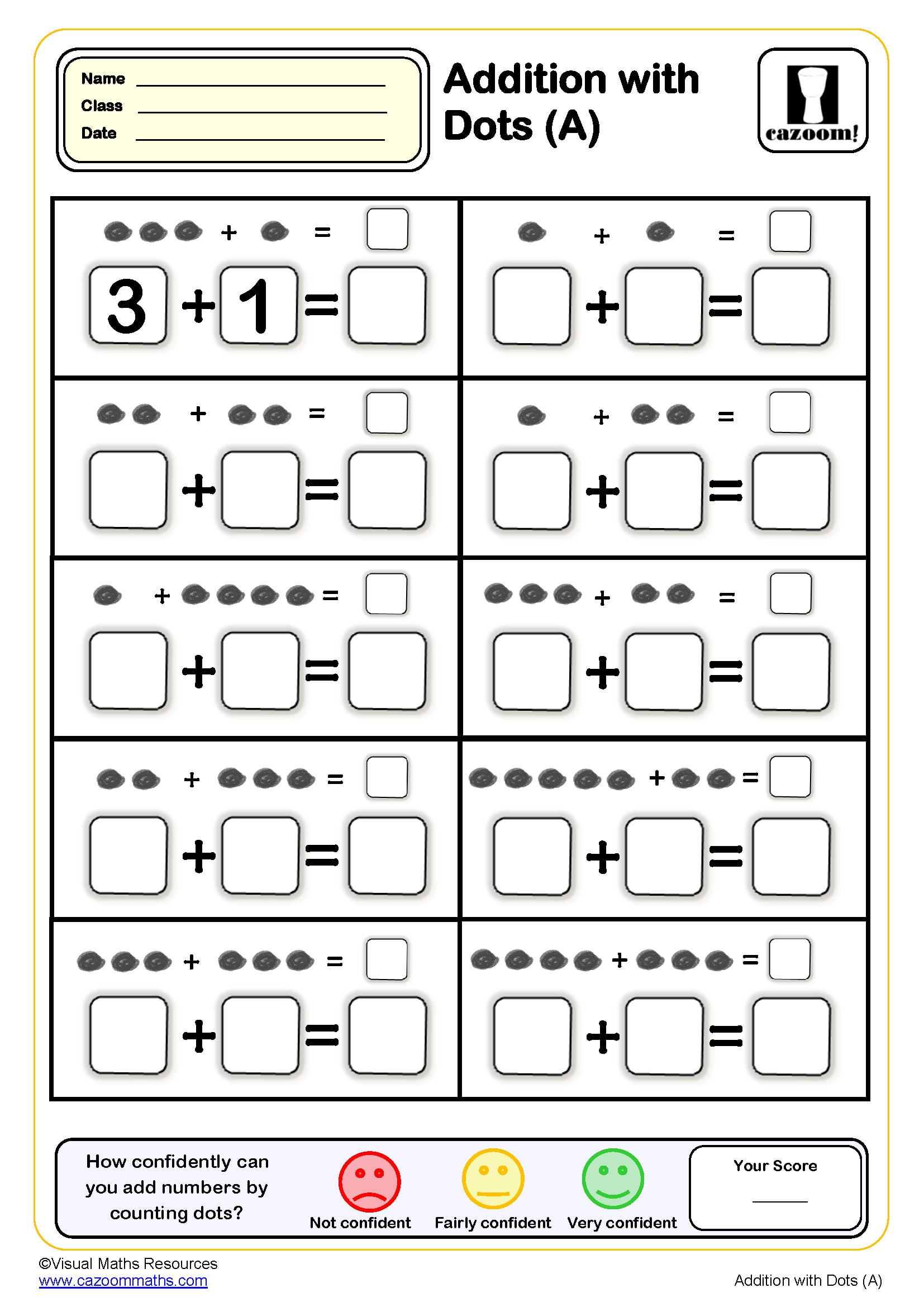
Addition with Dots (B)
Year groups: 1
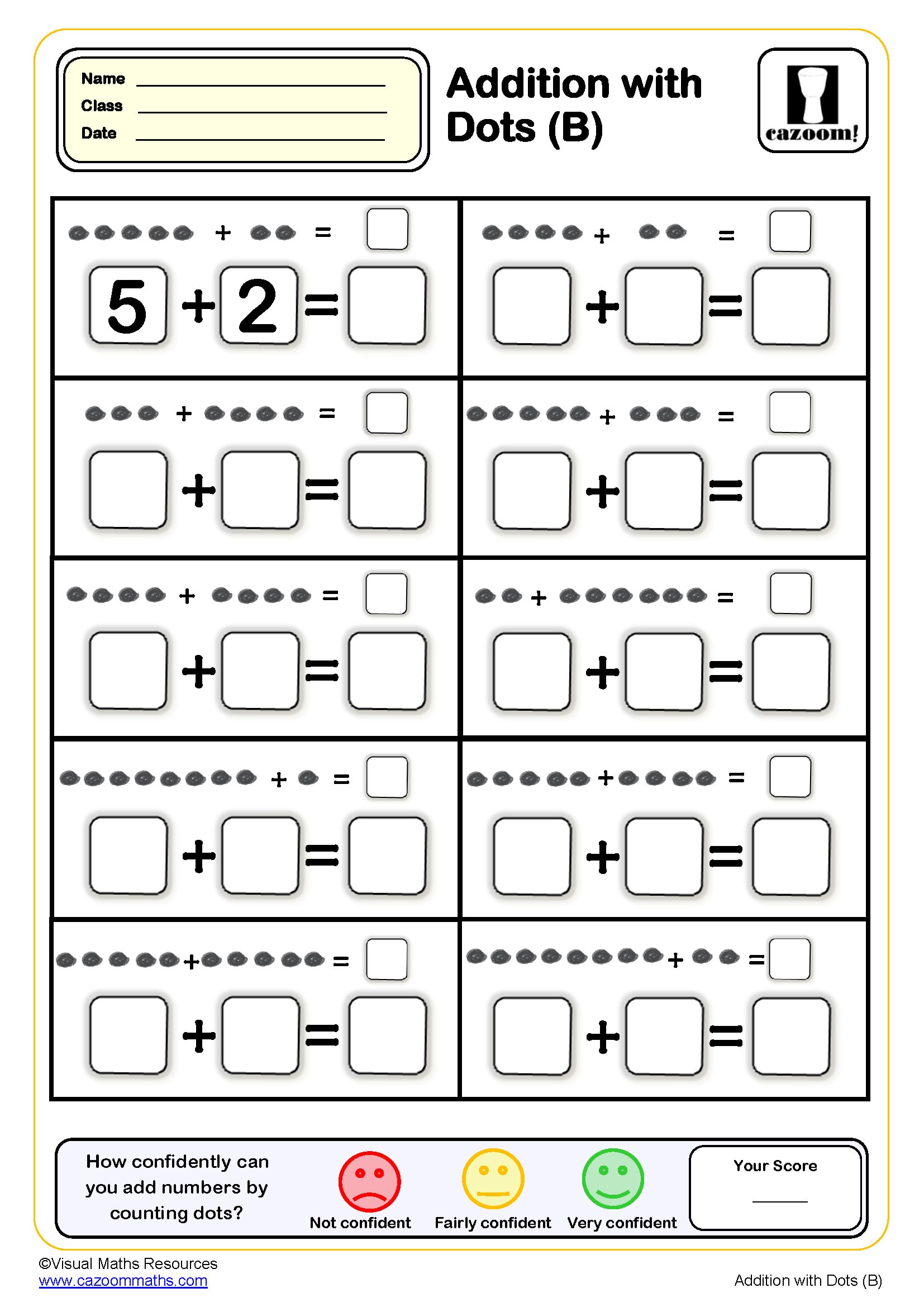
Addition with Dots (C)
Year groups: 1
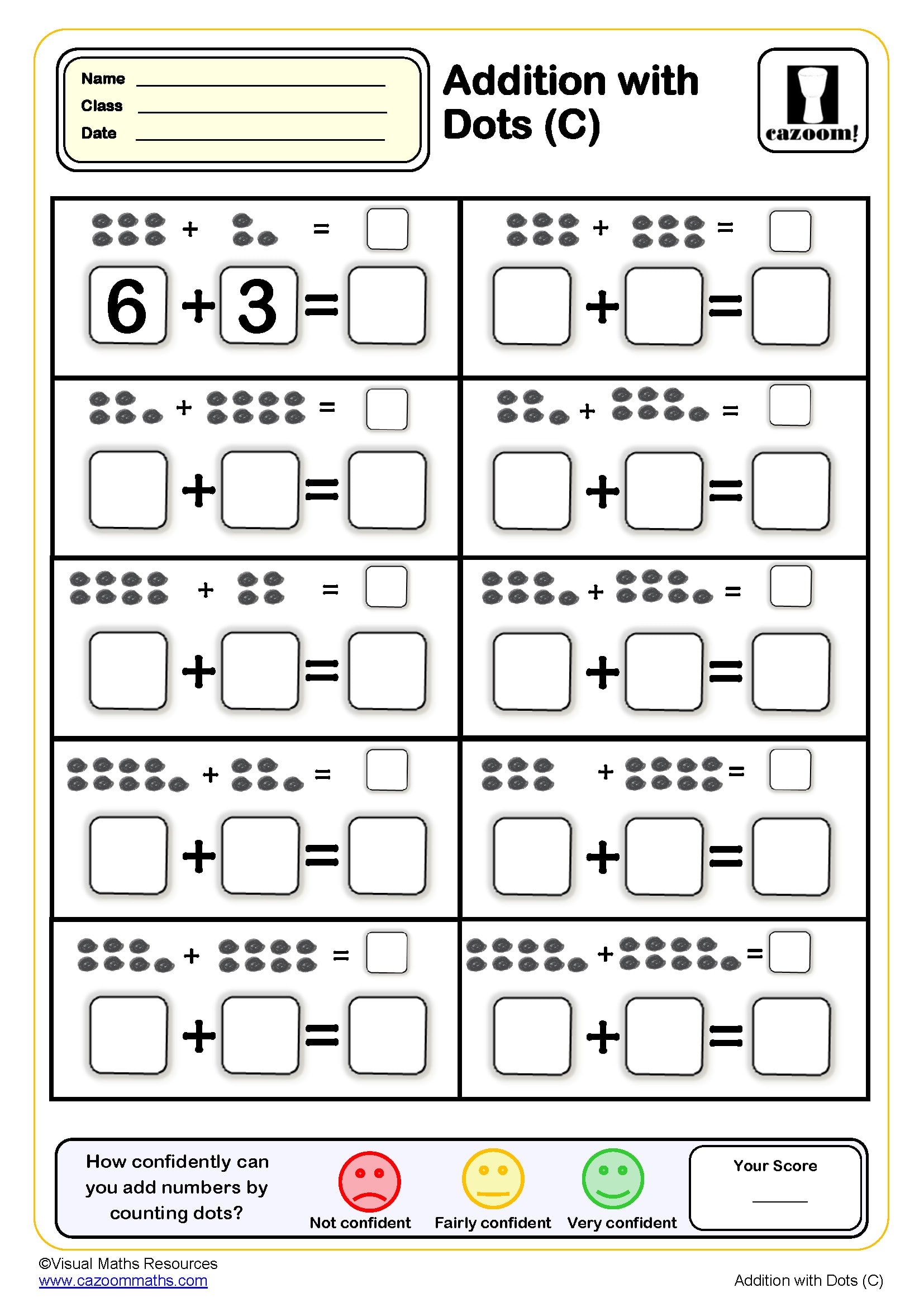
Addition with Number Lines (up to 10)
Year groups: 1
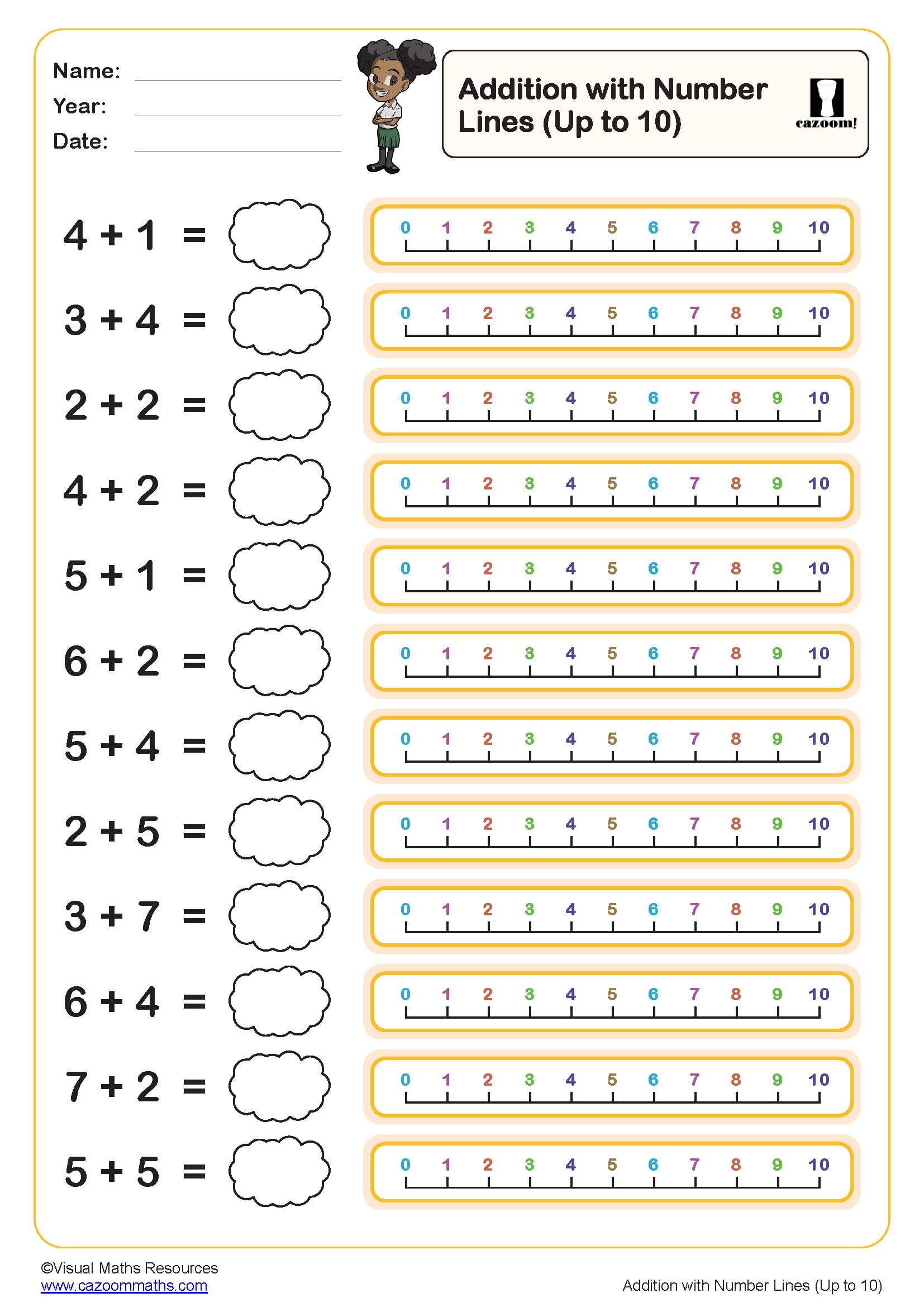
Addition with Number Lines (up to 18)
Year groups: 1
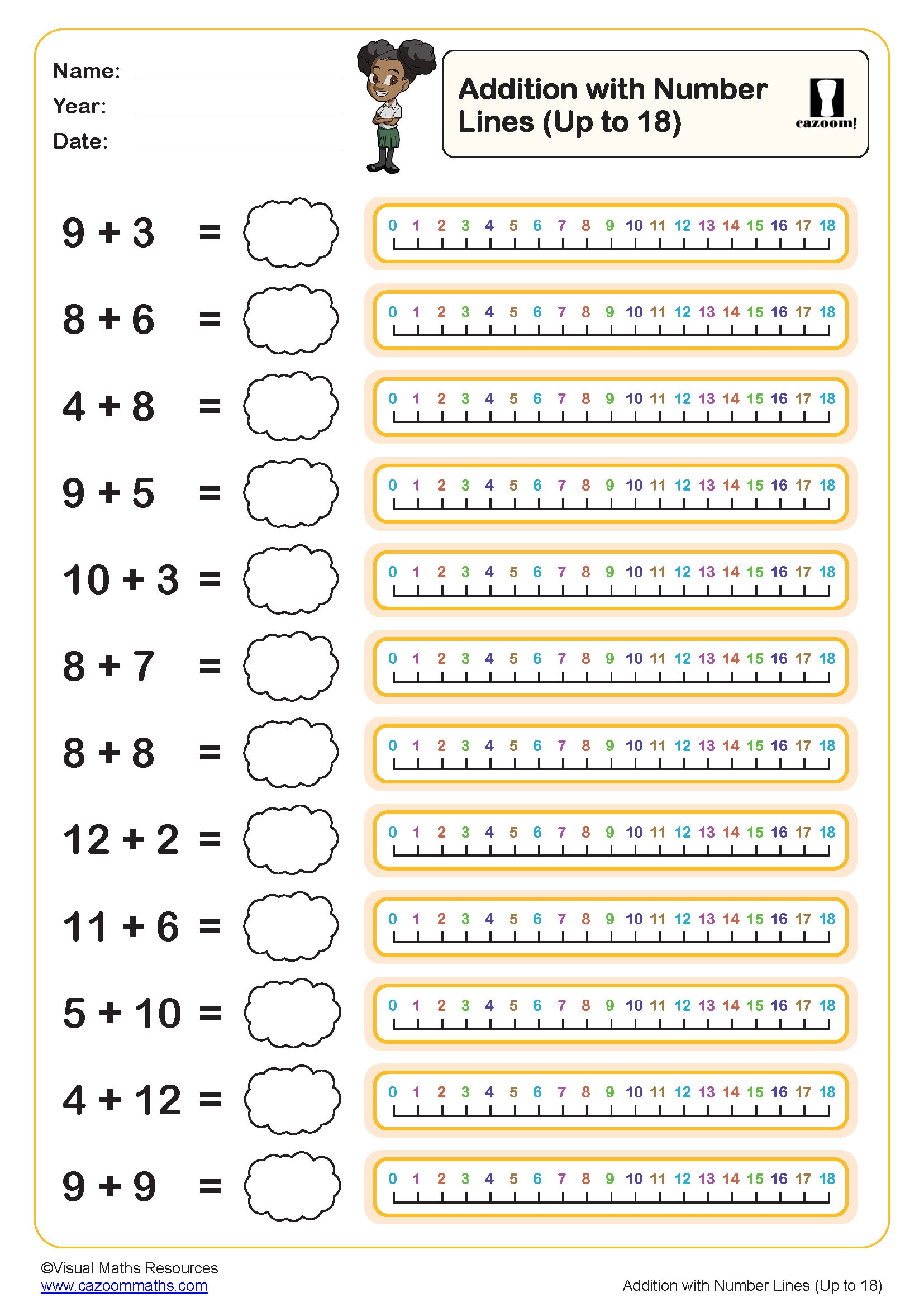
Addition with Number Lines (up to 5)
Year groups: 1
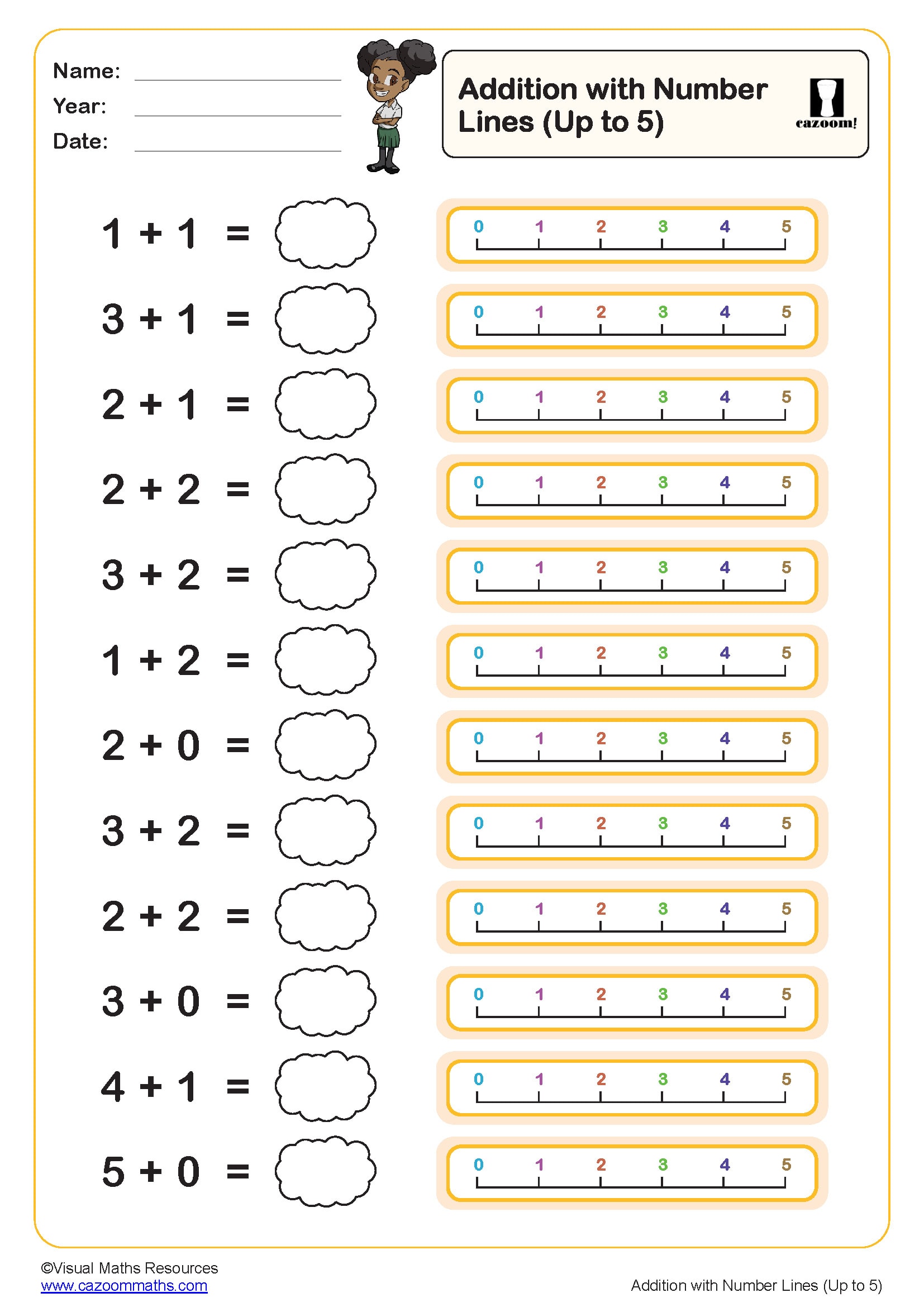
Addition with Sticks (A)
Year groups: 1
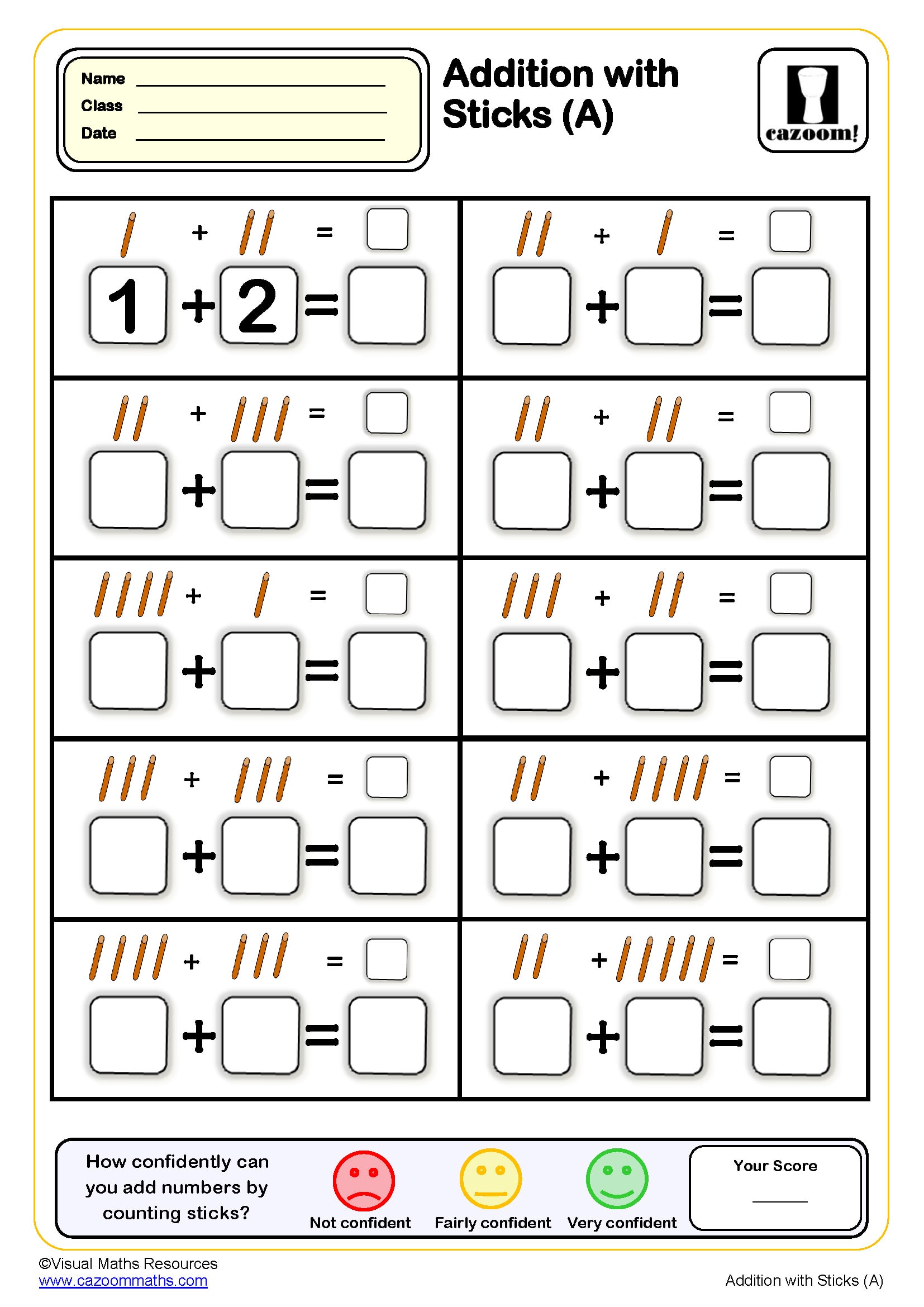
Addition with Sticks (B)
Year groups: 1
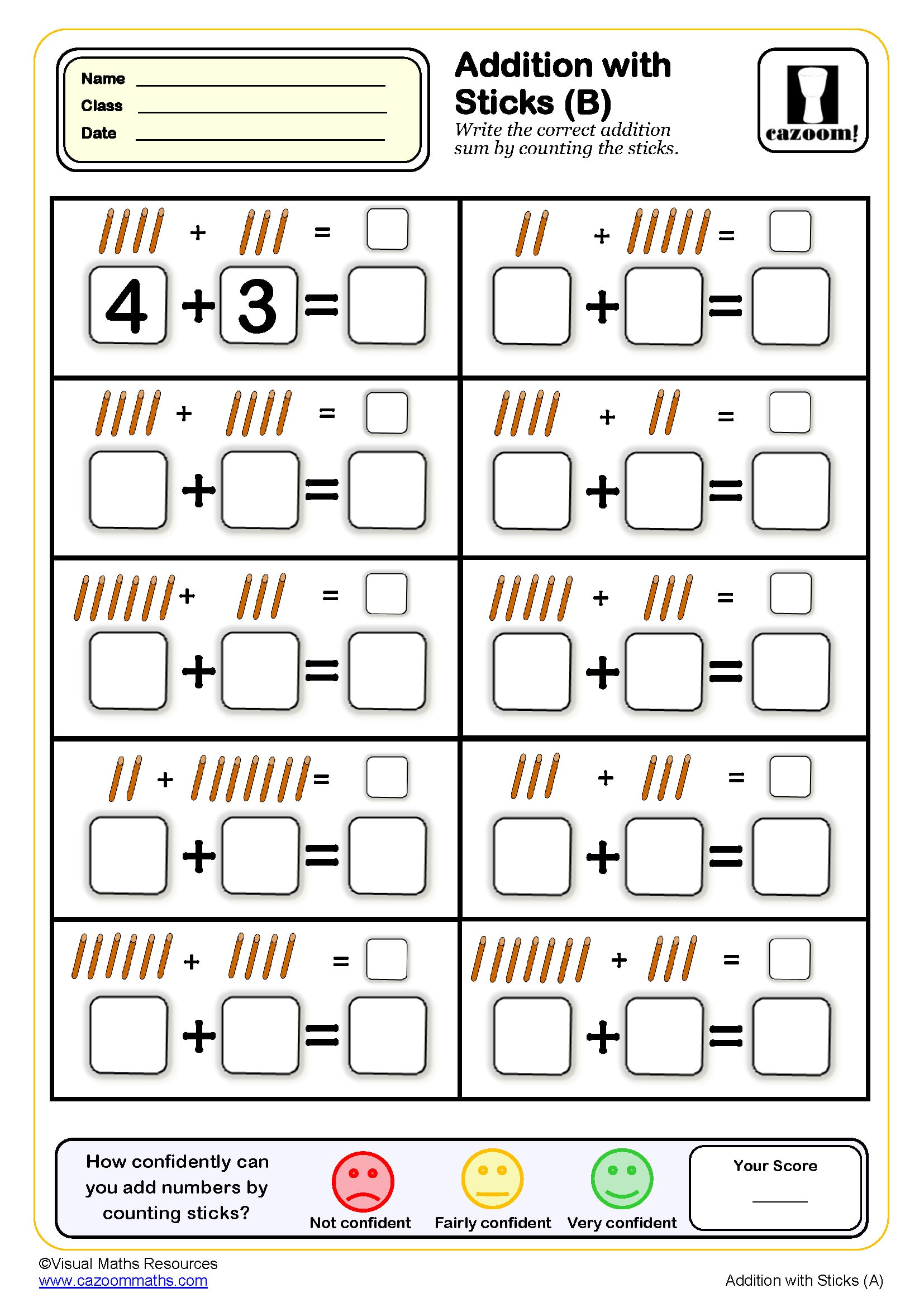
Addition with Sticks (C)
Year groups: 1
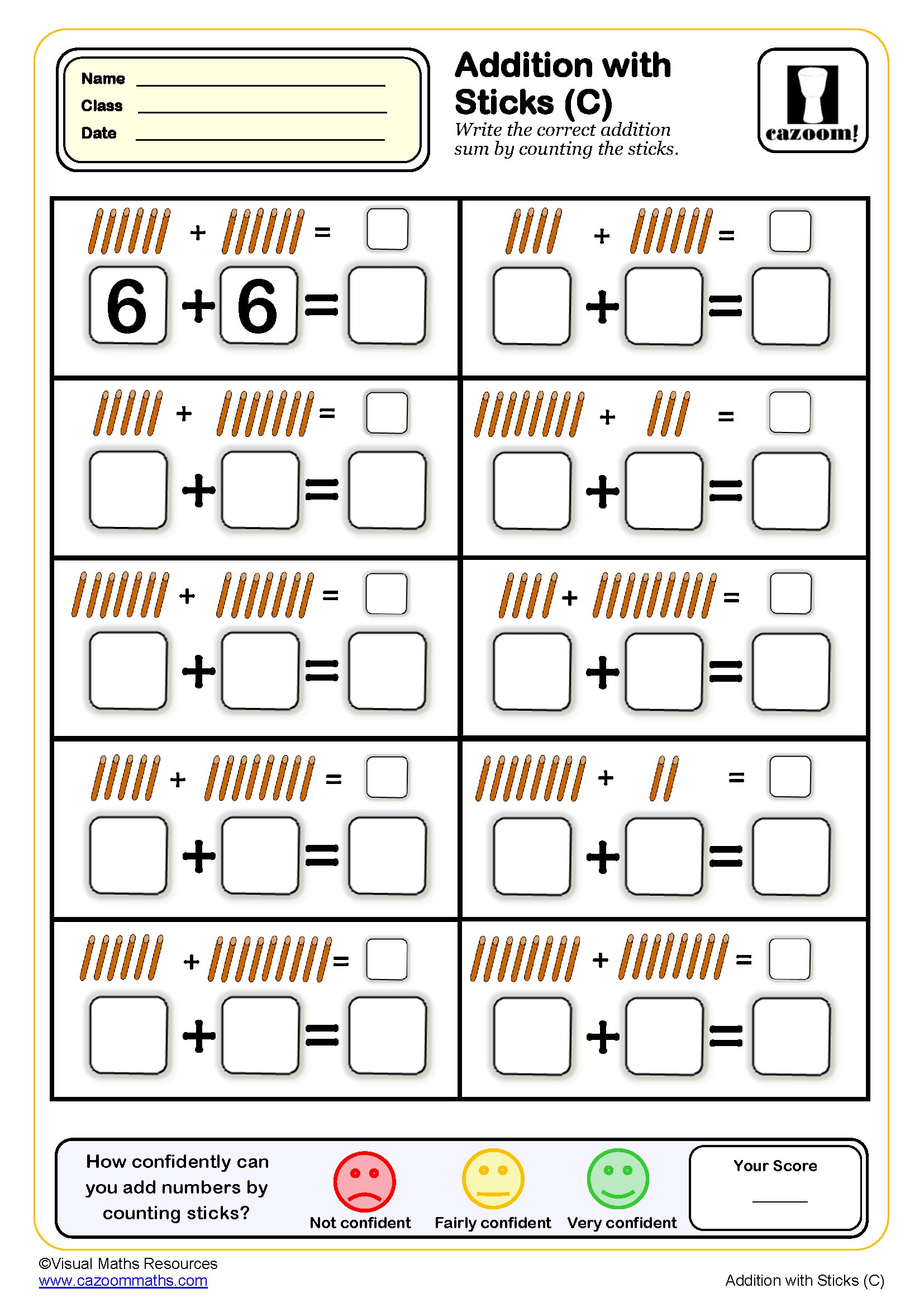
Introducing the Part Whole Model
Year groups: 1
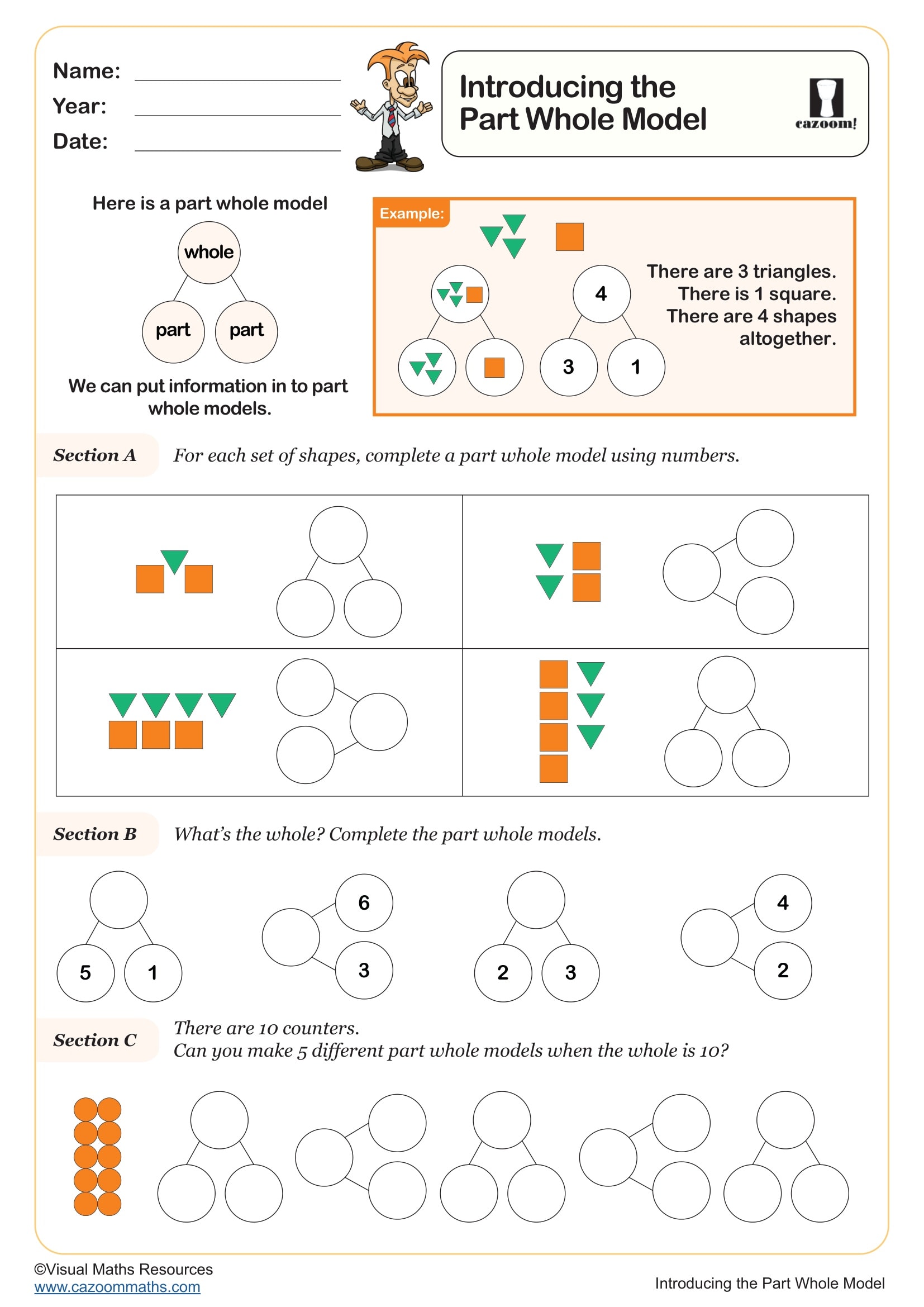
Writing Addition Statements
Year groups: 1
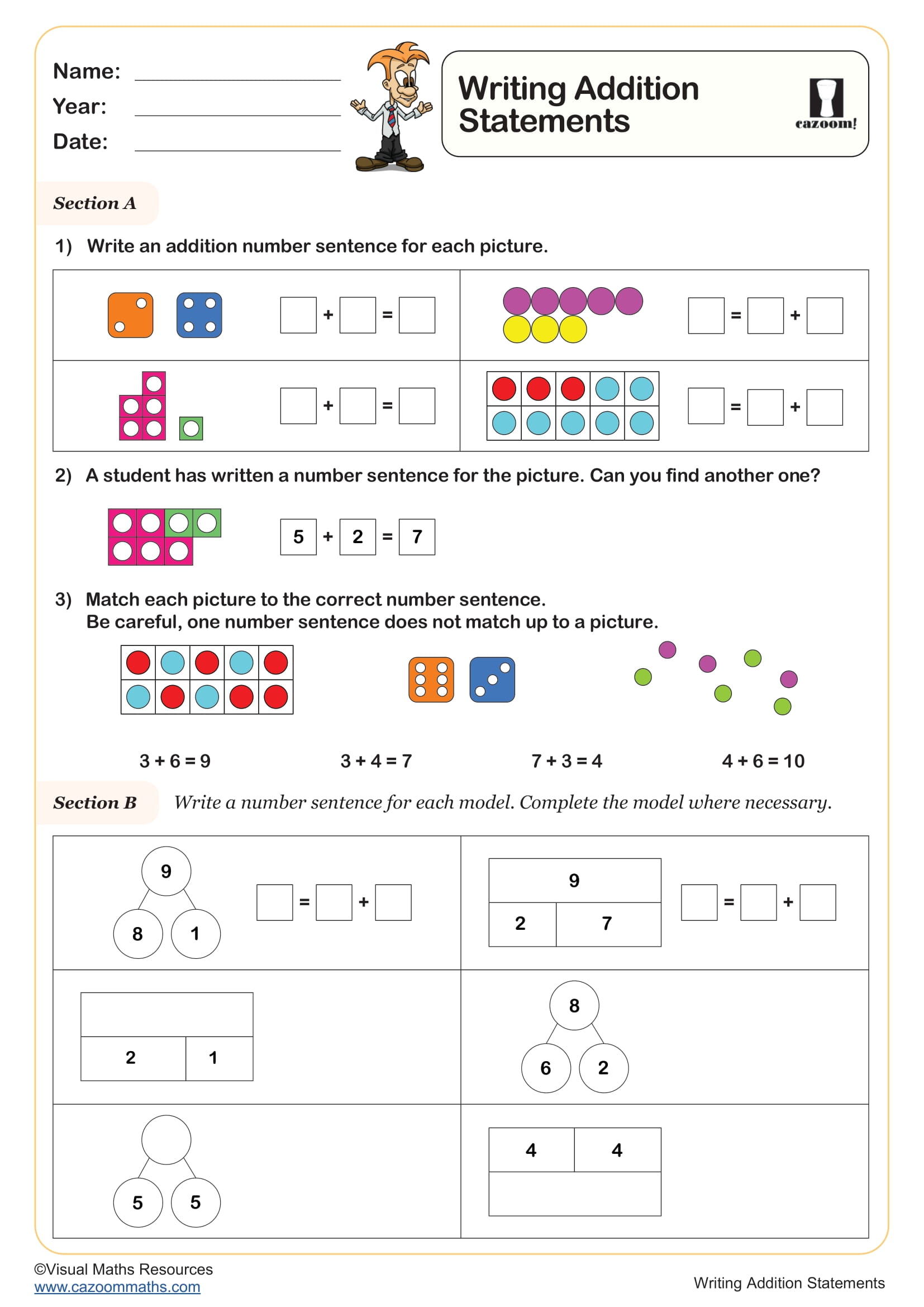
Doubling Numbers to 20 - Addition
Year groups: 2, 3
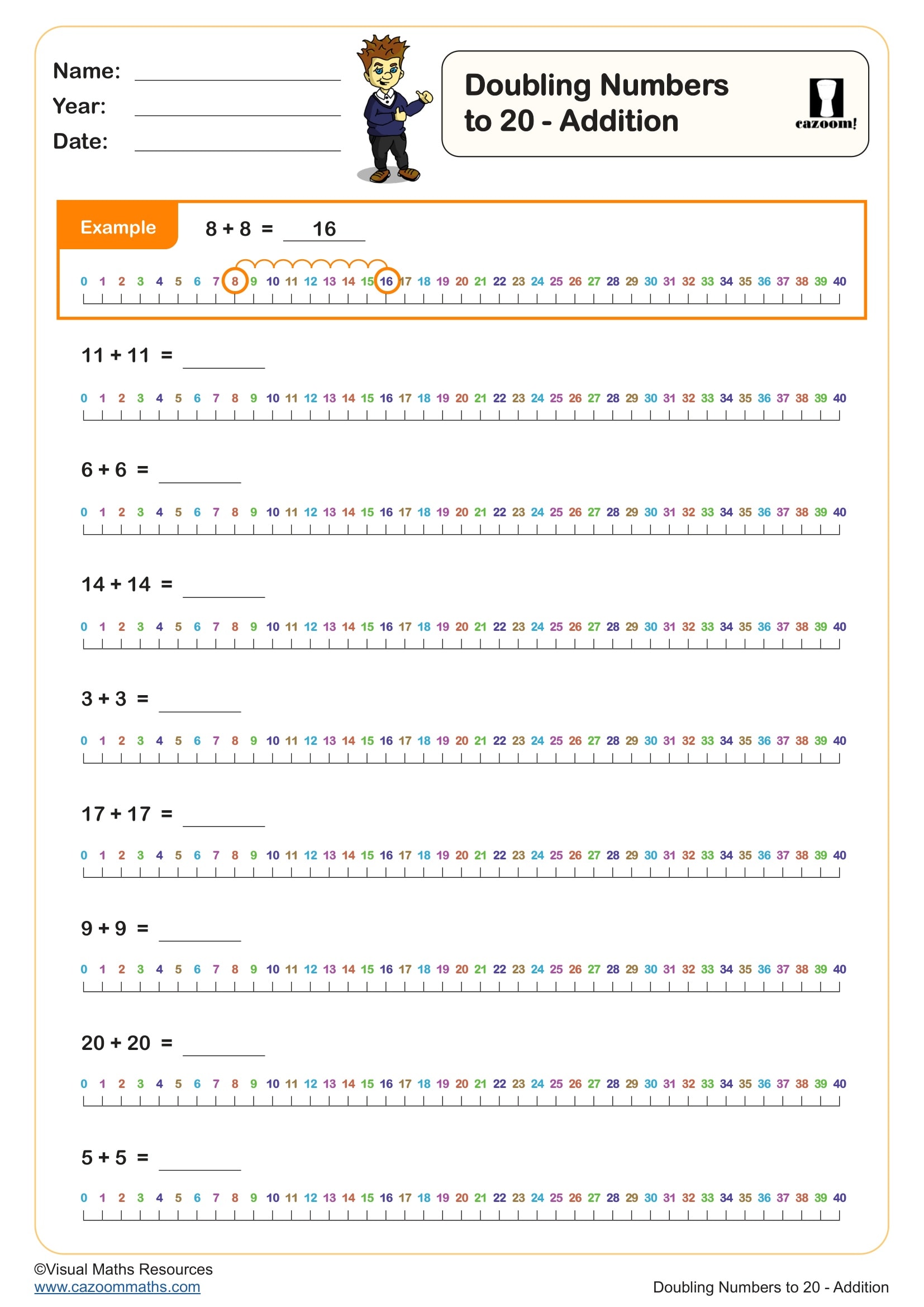
PRINTABLE PDF ADDING WITH VISUAL AIDS WORKSHEET WITH ANSWERS
Check out and download our Visual Aids Worksheets which will improve your young learner’s knowledge of various arithmetic calculations related to sums, for example- single digit addition, addition two digit numbers, addition sums with pictures, addition with dots, addition with number lines, etc. These worksheets are created in easy-to-download PDF format, include answers, and are designed to help your kids better understand and practise different mathematical equations. These worksheets are excellent resources that will make the learning process fun and interesting!
What Is Adding With Visual Aids in Mathematics?
Adding visual aids in mathematics is a creative and interesting method that is used to make the process of learning addition clearer and easier for learners. In this case, instead of relying solely on abstract numbers, visual aids are provided with concrete representations that can help young learners grasp these basic mathematical concepts more easily. For example, if a child is trying to add 3 + 4, they might use seven counters or beads. The students would start with three counters, and then add four more to visually see the total of seven.
Understanding The Concept Of Adding With Visual Aids
Adding with visual aids in maths means helping students understand how to add by using actual objects. This is significant when it comes to comprehending the concept of addition. Visual aids are useful for a student because they bridge the gap between numbers and understanding. For instance, a student can add five and two by using coloured counters. Starting with five blue ones, they would add two red ones, then just count them all up to reach seven. Things like counters, number lines, or drawings help visualise the process and make it easier to get together, especially for young learners who are trying to put together how numbers work in this world.
Use of Adding With Visual Aids in Real Life
When it comes to learning, seeing is believing. Adding visual aids to a lesson can help with understanding and make abstract ideas more tangible. For example, if you’re trying to determine the total amount of fruits you have in your cart while grocery shopping, group them together. This is an easy way to see how many you have without having to count them individually. Let’s say that you have five apples and two oranges— by just looking at the pile you grouped together, it’s easy to tell that you have seven pieces. The same goes for money saving too; children are often given a clear jar for their coins so they can visually watch their savings grow as time passes. Baking is another activity where we have to combine various ingredients. This often involves us pouring things in one by one and seeing how much we’re adding by eye. Not only do these real life examples showcase the importance of visual learning but they also highlight how much it helps us in our daily tasks and decisions.